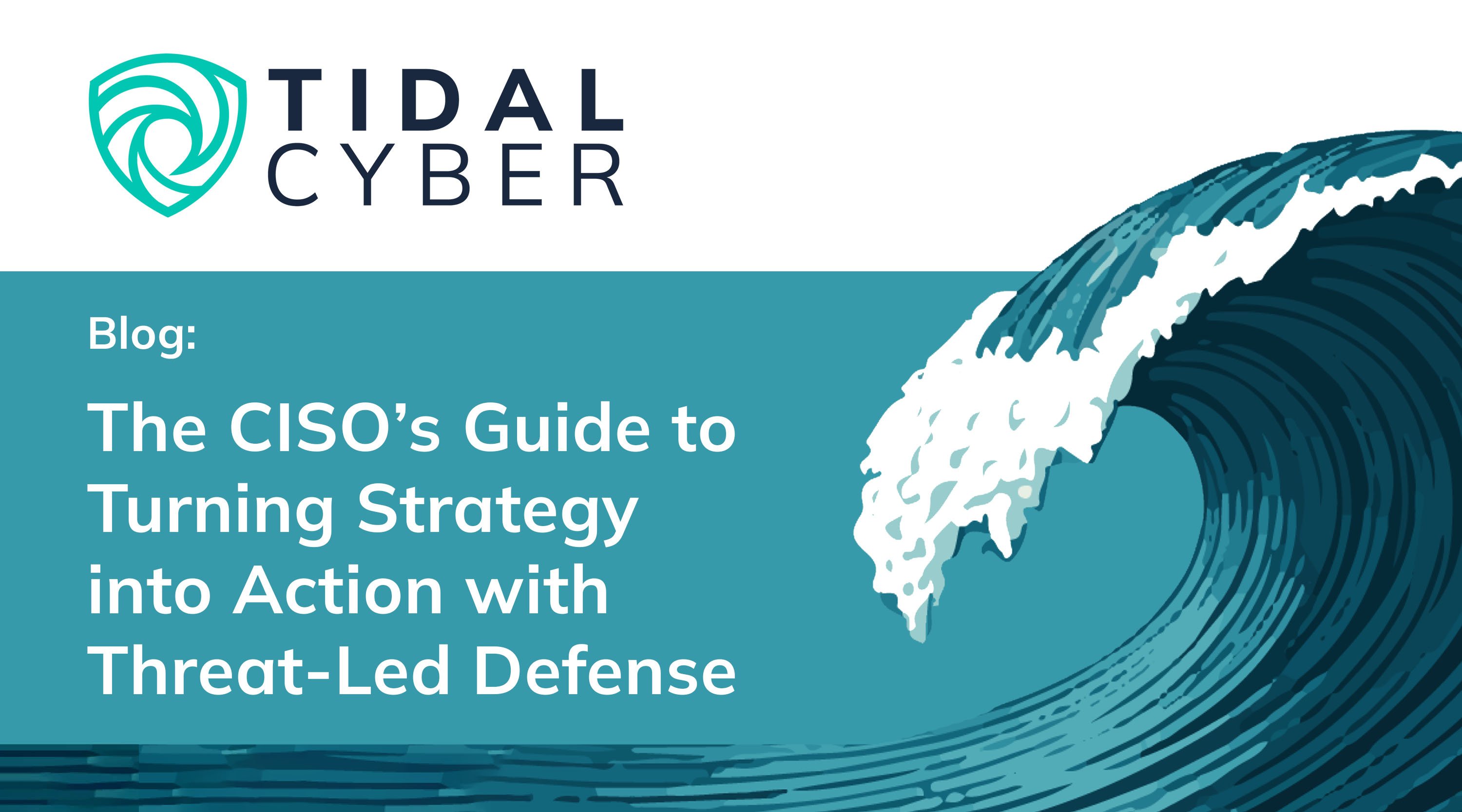Every CISO recognizes the difference between defining a security strategy and delivering on its promises. That gap is where security outcomes are won or lost.
Accenture describes almost one-third of organizations as belonging to the “Progressing Zone”. This is where cybersecurity strategy is strong, but implementation and execution remain unsatisfactory.
That’s because a strong strategy doesn’t always translate into a repeatable set of daily tasks that drive measurable results on its own. It takes insight and effort to make sure every security practitioner on the team understands the organization’s priorities and is empowered to make the right decisions in response.
Execution and Operational Security Success
Security leaders rarely lack strategy. Defining high-level objectives is among the first things new CISOs do when joining a new company. Everyone wants to reduce risk exposure, improve SOC efficiency, and strengthen resilience against real-world threats; defining a strategy enables the prioritization and pursuit of those goals.
But problems often arise at the execution layer. Strategy can get lost in translation after getting handed off to different team members, each pursuing their own interpretation of that strategy in relative isolation.
One reason is that strategy is expressed in broad business or risk terms. Every organization wants to “reduce the probability of attacker success”, “improve risk and confidence score”, and “ensure defenses are working as intended”. But these objectives don’t intuitively map to the levers that day-to-day practitioners can pull.
Teams are left trying to translate high-level goals into tactical actions without a shared framework for prioritization. The larger the more complex the organization, the bigger this challenge becomes.
As a result, detection engineering efforts often lack clear priorities, making it harder for teams to design and validate the rules and logic that drive effective detections. Red and purple teams could be validating controls in isolation. Threat intel functions curate data, but may not know if it will drive meaningful changes in coverage. Each of these actions come with downstream effects that impact operational security and optimization.
A New Operating Model is Needed
Bridging the gap between strategy and execution demands more new tools or more rigorous processes. What’s missing is a way to consistently show whether your defenses can withstand the latest adversary behaviors, and align operations accordingly.
Current practices lean on frameworks like NIST CSF, CIS Controls, or MITRE ATT&CK to define what “good security” should look like. These provide helpful structure but stop short of answering critical execution questions about how to optimize security operations in a specific real-world environment.
The lack of a unifying model means teams often work in silos. Every individual’s contribution has value, but without a common backbone they may not add up to measurable progress against relevant threats.
A modern operating model should tell security practitioners which threats to prioritize first and help them validate which controls are actually working. To do this, it must:
- Center on adversary behavior, not just vulnerabilities or generic best practices.
- Connect strategy to task-level initiatives, giving engineers, analysts, and testers clear direction tied back to business outcomes.
- Enable measurement and reporting, so CISOs can show progress to boards and regulators in defensible, adversary-driven threat-informed terms.
This is the role of Threat-Led Defense: a framework that operationalizes strategy by aligning defenses directly with how adversaries operate and the techniques they use.
Threat-Led Defense: What It Is (and Isn’t)
Threat-Led Defense ensures your defensive stack can defend against the latest threats and adversary behaviors by mapping your tools against adversary (Sub-)Techniques. Coverage maps are generated using multiple frameworks, including but not limited to ATT&CK, based on tactics and procedures, revealing where tools can effectively defend against adversary activity and where critical gaps may exist.
At its core, Threat-Led Defense:
- Turns static, vulnerability-centric frameworks into living, threat-aligned strategy.
- Maps intelligence, detections, and controls to actual ATT&CK TTPs and procedures.
- Gives teams clarity on answering the question, “Can I defend against the threats that matter most and the techniques adversaries are using?”.
This can unlock the value of security strategy at the level of execution, but not on its own. It’s important to recognize the boundaries between Threat-Led Defense and the rest of your overall security strategy.
Here’s what it isn’t:
- Not a replacement for CVEs. Vulnerability management remains foundational, but doesn’t capture adversary behavior. Threat-Led Defense extends defense beyond patch cycles by ensuring teams can detect, prevent, and reduce the probability of attacker success.
- Not just another compliance exercise. Frameworks like NIST CSF or CIS Controls tell security leaders what to address. Threat-Led Defense shows how to align those requirements with the threats that matter most.
- Not a generic ATT&CK exercise. Many programs tag detections or reports with the 14 major ATT&CK Tactics, but stop there. Threat-Led Defense goes deeper by leveraging procedures to map the specific ways adversaries execute techniques in the real world.
The result is a scalable, measurable way to transform broad objectives into actionable priorities that both practitioners and executives can rally around.
The CISO’s Playbook: How to Leverage Threat-Led-Defense
Threat-Led Defense gives security leaders a consistent, repeatable playbook for anchoring core security operations in adversary behavior. This helps practitioners’ prioritize and drive measurable improvement on the metrics that are actionable and based in the reality of your environment.
1. Establish relevant threat profiles
Identify the adversaries, correlated with the groups, campaigns, and software most relevant to your sector and tech stack. By curating a focused set of threats, you give teams a shared starting point for clear prioritization.
Outcome: Alignment across intelligence, engineering, and validation functions. Everyone is working from the same picture of what the organization’s security depends on first.
2. Map your defensive stack to ATT&CK
Use MITRE ATT&CK as the backbone to evaluate how your existing tools and configurations stack up against known adversary behaviors. A coverage map highlights overlaps, redundancies, and gaps in a way that’s specific to your environment.
Outcome: Leaders gain clarity on current-state coverage, and practitioners know where to focus their next efforts.
3. Enhance detection engineering with procedural insight
Move beyond tagging alerts to mapping techniques. Incorporate procedure-level intelligence into detection design and gain precision that reduces noise and ensures detections reflect real-world behaviors.
Outcome: Higher-fidelity detections, increased true positives, and better analyst efficiency in time and savings.
4. Validate controls to close the loop
Integrate outputs from breach-and-attack simulation, red team, or purple team exercises. Map results back to ATT&CK TTPs and your Coverage Map. This creates a direct feedback loop between testing and defense improvement.
Outcome: Leaders see which defenses are performing, which are failing, and where to direct resources next.
5. Drive ongoing improvement with recommendation tracking
Translate findings into prioritized, ATT&CK-mapped recommendations. Track their lifecycle and categorize them as open, in-progress, or closed. Quantify the impact of security operations on your overall Confidence Score.
Outcome: A defensible, board-ready view of progress that shows strategy being converted into measurable action.
What to Measure: From Activity to Outcomes
Activity is not the same as progress. To prove strategy is being operationalized, CISOs need metrics that show alignment with adversary behavior and defensible improvements in security posture.
Key measures include:
- Procedures: It’s not just about tactics and techniques, but organizations must know how well their stack defends against attacker behavior and the defenses that are most relevant to the techniques they are using.
- Coverage: Coverage mapping ensures your technology investments deliver measurable risk reduction by validating the effectiveness of your defenses, enabling targeted tuning, faster gap remediation, and higher detection efficacy.
- Control Efficacy: Control validation proves evidence-based answers on which defenses are effective, offering defenders immediate feedback on pass/fail results.
- Confidence Score: A single, defensible metric showing how well your defenses align to prioritized threats and which capabilities can be turned on to improve your score.
These outcome-oriented measures shift the conversation from “what did we do?” to “what risk have we reduced?” This is a narrative both boards and regulators are more likely to trust.
Operationalize Threat-Led Defense with Tidal Cyber
Tidal Cyber is the first true Threat-Led Defense platform built to flip the traditional defensive model by putting real adversary behavior at the center of your defense strategy.
By mapping techniques, sub-techniques, and procedures to ATT&CK, we reveal exactly where you’re exposed and how attackers actually operate. It’s a level of precision you’ve never had before, empowering your security team to proactively reduce risk and optimize high-impact security investments.
Threat-Led Defense is Tidal Cyber’s unique implementation of Threat-Informed Defense, enhanced with procedure-level granularity to make CTI more relevant and actionable.


